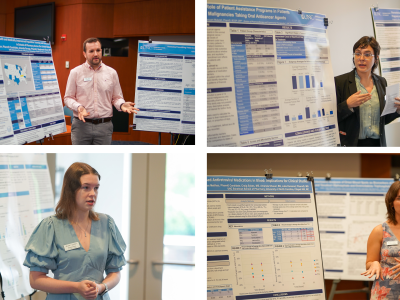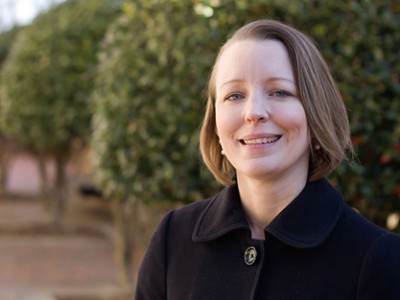February 22, 2024
 Alexander Tropsha, Ph.D., is using machine learning and artificial intelligence to help his collaborators at Harvard build a portable chemical gas sensing device called iNOSES that will help identify volatiles in the air.
Alexander Tropsha, Ph.D., is using machine learning and artificial intelligence to help his collaborators at Harvard build a portable chemical gas sensing device called iNOSES that will help identify volatiles in the air.
Tropsha, K.H. Lee Distinguished Professor in the Division of Chemical Biology and Medicinal Chemistry at the UNC Eshelman School of Pharmacy, and collaborators at Harvard University, received a National Science Foundation (NSF) grant as part of the Convergence Accelerator program. The program is investing nearly $10 million across several projects to develop transformative bio-inspired solutions, like iNOSES.
“The proposed bioinspired device employs a ‘sniffing’ sequence of pumping the volatile analytes in a special chamber followed by their extraction from the chamber, and a special sensor within the chamber detects these analytes,” said Tropsha, co-principal investigator. “A specially designed AI algorithm enables on-the-fly adjustment of the frequency and depth of the sniffing events and accurate detection of potentially harmful volatile compounds that can be found in the air of residential or industrial buildings or food storage facilities.”
Being able to get real-time information about the air we breathe has become an important topic over the last several years. Currently, the method to identify the composition of gaseous samples uses large, bulky and expensive stationary equipment. To address this, iNOSES will be a portable device that will pave the way for standardization in detection and reporting across sectors.
According to the World Health Organization, it’s estimated that household air pollution accounts for 11% of lung cancer deaths annually, and outdoor air pollution leads to 4.2 million premature deaths worldwide each year.
To detect volatiles in the air quickly, iNOSES will use adapted bio-inspired sniffing sequences to empower the sensors in the device to differentiate the physiochemical properties of odorants and enable refined discrimination.
Initially, iNOSES will greatly impact building operators by allowing them to detect mold and assess indoor air quality in order to ensure the healthy state of the building. It will also help government agencies and manufacturers, who want to standardize measurements and confirm emissions compliance by enabling feedback between the regulator and emitter.
The hope is for iNOSES to allow for continuous real-time monitoring of toxic gasses and integrations with building ventilation and filtration operations.
The team will develop iNOSES into a proof of concept in phase one of the Convergence Accelerator program before doing a formal proposal and pitch to apply for phase two. As part of the program, Tropsha and the Harvard team will meet weekly with an NSF mentor as they develop their proof of concept.
iNOSES stands for intelligent Nature-Inspired Olfactory Sensors Engineered to Sniff. The pilot version of iNOSES was described in a recent publication by the Harvard team, led by project principal investigator Joanna Aizenberg, Ph.D., who is also a member of the National Academy of Sciences.
Latest News

Dean Angela Kashuba receives Carolina Alumni Faculty Service Award

RASP poster presentations capture student research


